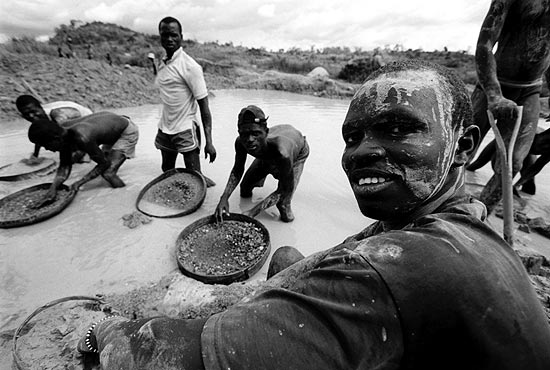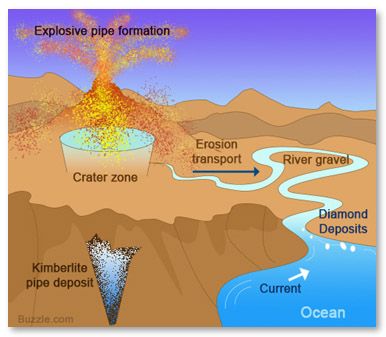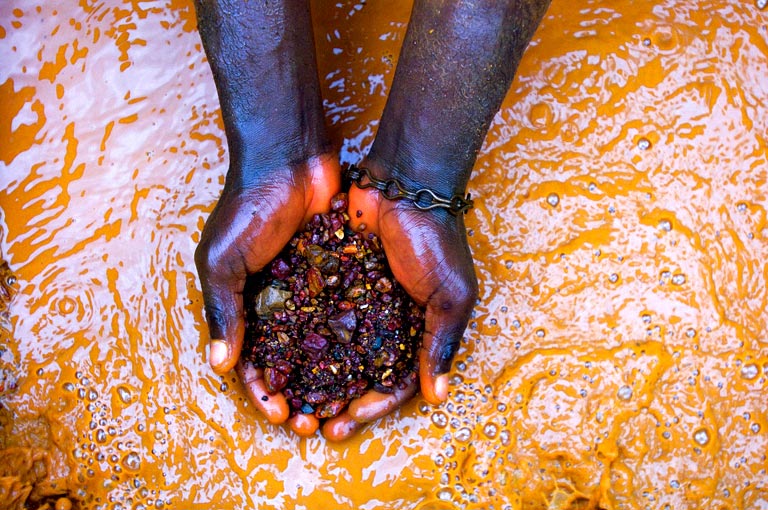
A is for...Alluvial Diamonds
01.02.19
A-Z of IGR…
In this series of blogs, we will bring you a comprehensive A-Z of all things IGR. The blog posts will bring you knowledge of geology, gemstones and good jewellery along with a whole cornucopia of gem related knowledge. We’ll be bringing you a new nugget of knowledge weekly so make sure you subscribe to our emails!
A is for… Alluvial Deposits.
Not all diamonds come from a hole in the ground.
The oldest mining method, originating hundreds of years ago in India, alluvial diamond deposits were once the only source of the sort-after gemstone. But what are they? Alluvial diamonds are those which have been removed from the original Kimberlite source by erosive processes over the millennia. When the sediments are deposited, they settle according to their weight, with heavier, more valuable minerals like gold, diamonds and platinum often being deposited at the same time; the diamonds end up in new environments such as the ocean floor, shorelines or river beds.

A conventional (underground or open pit) diamond mine mines at the site of a kimberlite intrusion, however alluvial mines are above ground operations which cannot be pin pointed to one precise location. There is no single, universally applicable method of target selection for alluvial diamond deposits. Due to the nature of the deposit (sediment being picked up and transported) the area which diamonds can be found is vast, and therefore is difficult and costly to industrially mine using heavy machinery. Large scale mining companies, with the budget, remove millions of tonnes of sand, gravel and/or clay, from riverbeds and coastlines, and then sift and separate it to yield diamonds. Alluvial deposits however, are usually mined through small-scale or artisanal digging using spades and sieves or even bare hands. Around 10% of the world’s rough diamonds come through industrial alluvial mining and 14% through small-scale or artisanal digging.

Photo from GemKonnect
Alluvial diamond mining is particularly prevalent in Africa — for example, De Beers has alluvial mining operations in Namibia. As well as some river beds in; Angola, Sierra Leone, Democratic Republic of Congo, Central African Republic, Cote d’Ivoire, Guinea, Ghana, Liberia, Tanzania, Togo, Brazil, Venezuela, Guyana and South Africa.
Environmentally speaking, small scale artisanal alluvial miners have less impact than a typical diamond mine. So next time you take a trip to the beach, take your bucket and spade and you may find your very own pirate treasure!




